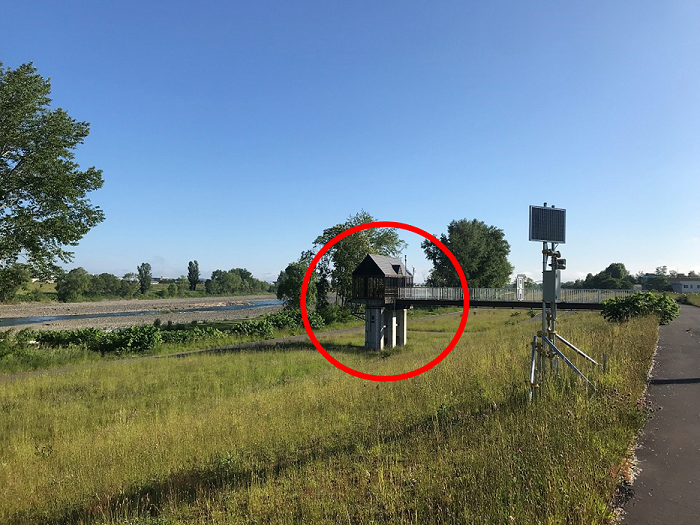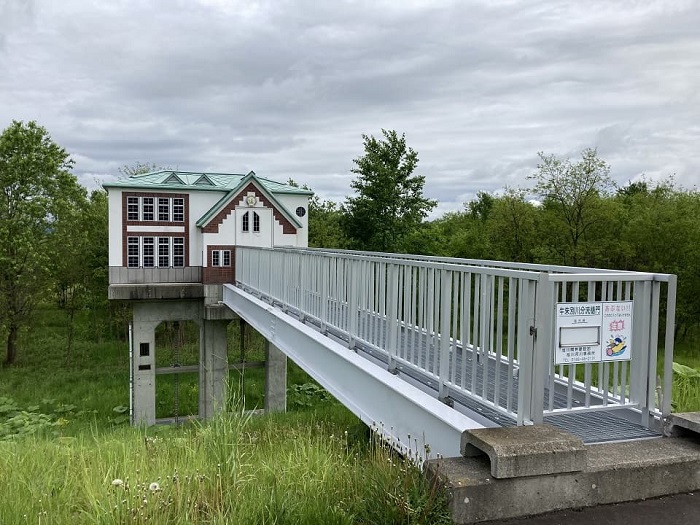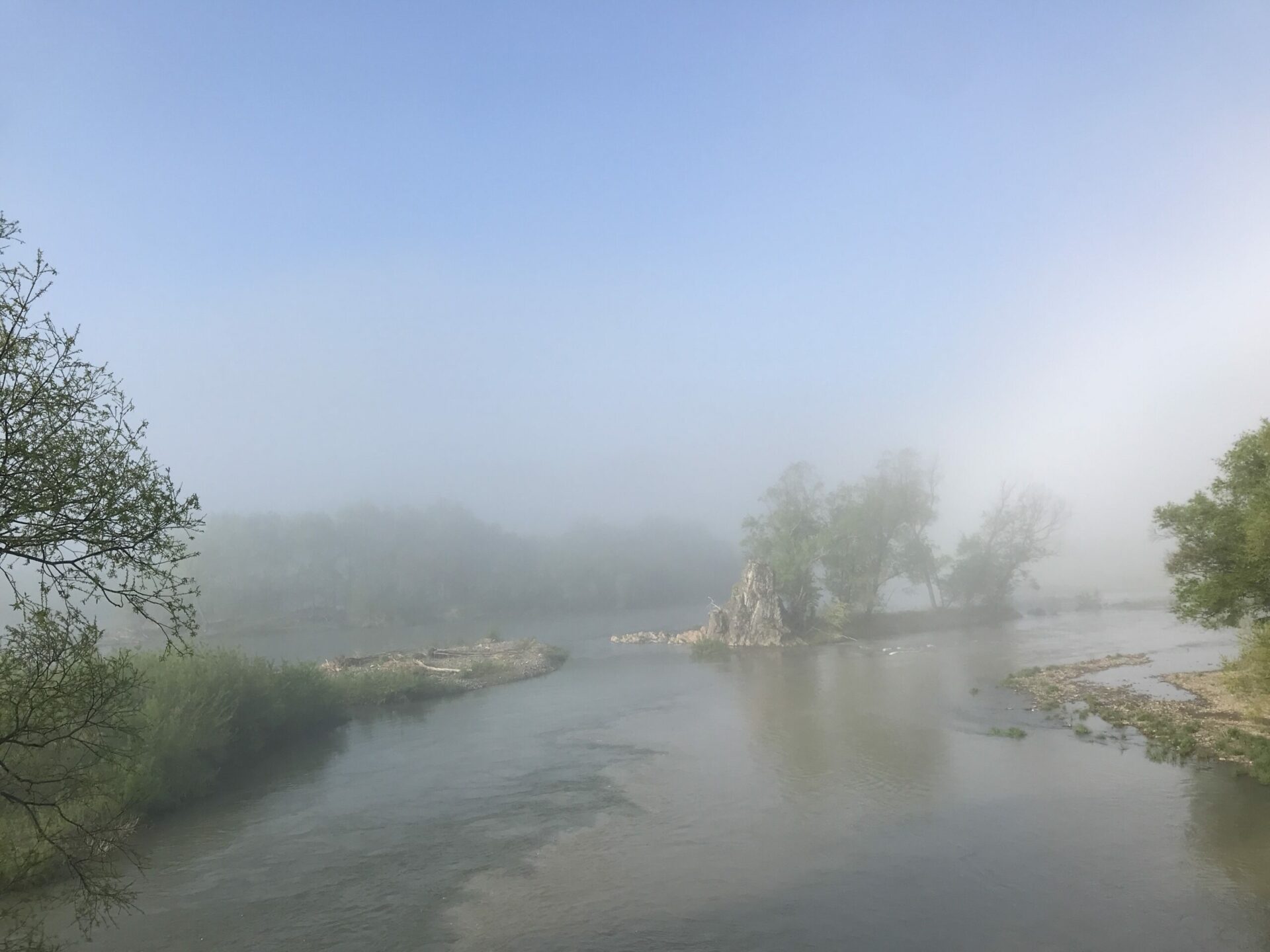Asahikawa is a paradise of rivers
The bike path along the river is one of the most comfortable road to run in Asahikawa. Most of pedestrian and bike paths laid out on the top of embankments. You can pedal along the river to your heart’s content without worries about cars. Asahikawa ctiy has 130 rivers and more than 750 bridges, and “Kawa” means “river,” so as the name of city suggests it is a paradise of rivers and accompanying small paths.
Objects of curiosity and their various designs
Do you notice anything that catches your attention, when you are running along the river?

Yes, they are small structures scattered along the embankment. They are called “樋門” (Himon) in Japanese which means sluice gates in English. I found there are amazingly different designs in the city. Unfortunately, I have no other place to show off my collection of photos of these interesting designs. So I’m going to make a special effort to share them with you. Here you go!

Fig. 1: A fairy house in which a gorgeous ball seems to be held

Fig. 2: Old-fashioned telephone box type

Fig. 3: Japanese style, modeled after wood shingles, a traditional architectural technique
Function of sluice gates
By the way, I looked up again what they are. According to the Ministry of Land, Infrastructure and Transport of Japan, their functions are:
- When the water level of the river is low, the gate of the drainage sluice is open, allowing domestic wastewater and rainwater to flow into the main river
- When the river level rises due to heavy rain, the gate of the drainage sluice will be closed in order to avoid flood damage. If it’s not closed, water from the river can flow into the houses through the sluice gate.
- However, if sluice doors are closed when domestic rainwater is also high, there is nowhere for the water to go on, and the residential area may be flooded. For this reason, the measures such as installing drainage pump stations is important.
- When the water level of the river settles down low enough and there is no longer any danger of backflow, the sluice gate doors are opened again. This is to allow the water stored on the residential side to discharged into the river.




Source: https://www.thr.mlit.go.jp/shinjyou/02_kasen/kanri/himon.html
Water level observers
Who will open and close that gate? It is water level observers. Local residents are commissioned as sluice gate level observers to open and close the gate when it is necessary.
Water Level Observers are called out when the river level rises and there is a risk of backflow, and start closing operation of the gate when the backflow begins. After that, they stay at the site and periodically observe the water level, and when there is no longer any danger of backflow, they open the gate again and the operation is completed.

Photo Credit: https://www.thr.mlit.go.jp/shinjyou/02_kasen/kanri/himon.html
Local heroes play important role
The sluice operations are a long and arduous job that takes many hours, day and night. It is not too much to say that the safety and properties of local residents are protected by the sluice level observers. What a surprise to find these local heroes playing such an important role! Don’t think of sluice gates as mere fairy tale hobby huts. It is the embodiment of respect to the structures that plays an important role in local community. I hope you will enjoy the various design of structures when you are cycling along the river in Asahikawa!

Reference: Kyoto City Officila Website (https://onl.sc/MTjVyDq)

Nami

